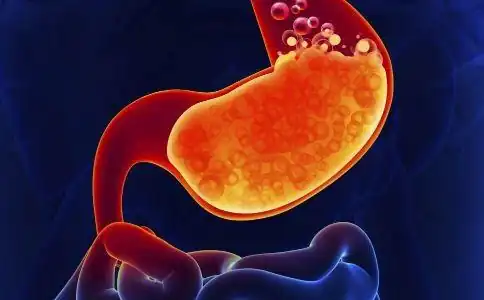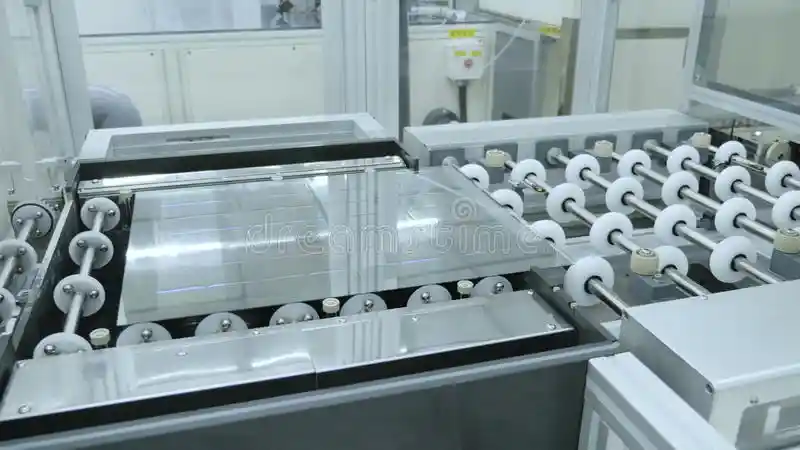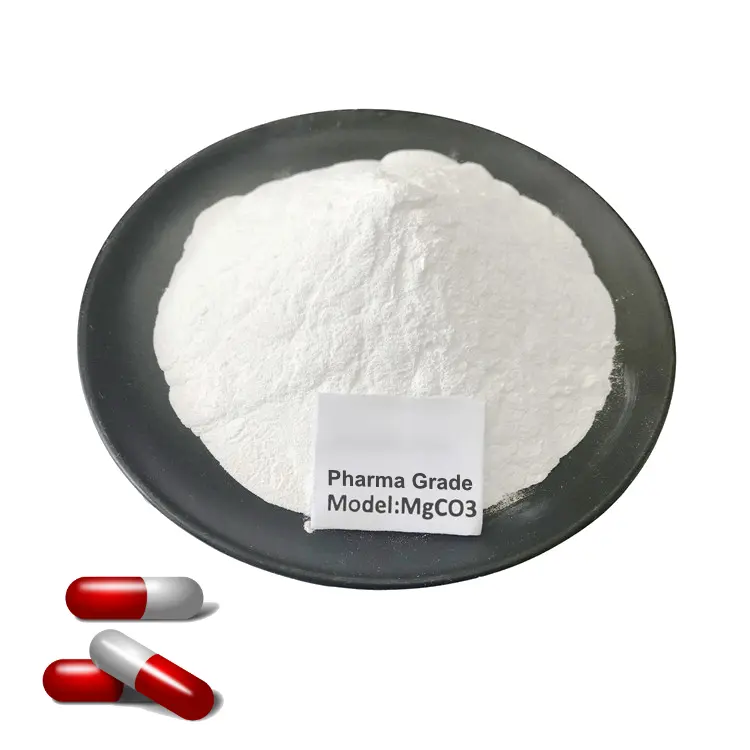Overview
Heavy magnesium carbonate, also known as basic magnesium carbonate, is composed of hydrated basic magnesium carbonate or hydrated ortho-magnesium carbonate, with a magnesium oxide content of 40.0% to 43.5%. It can be used in the pharmaceutical industry as a gastric acid neutralizing drug for gastritis and duodenal ulcers, and can also be used to manufacture magnesium salts, magnesium oxide, fireproof and thermal insulation materials, fireproof coatings, ceramics, glass, cosmetics, toothpaste and pigments.

Physical and chemical properties
This product is hydrated basic magnesium carbonate with a magnesium oxide content of 40.0% to 43.5%. It is a white powder, non-toxic, odorless and almost tasteless. It is stable in the air and almost insoluble in water or ethanol, but can make water weakly alkaline. It releases carbon dioxide and dissolves in dilute acid. It decomposes above 300°C, releasing water and carbon dioxide to generate magnesium oxide.
Preparation method
1. Preparation of medical heavy magnesium carbonate:
(1) Synthesis of heavy magnesium carbonate The specific operation steps are as follows: First, add a certain amount of Na2CO3 solution to the reactor, and add an equal volume of MgCl2 solution with equal molar concentration to the Na2CO3 solution while stirring at room temperature. After the addition is completed, put it in a constant temperature bath, control the constant temperature for pyrolysis and stir from time to time. After pyrolysis for a certain period of time, vacuum filter while hot, wash with deionized water, wash until the filtrate no longer contains Cl-, drain, and put it in an oven for drying. After drying to constant weight, weigh and calculate the yield.
① Acid hydrolysis
Add 100 mesh fully passed magnesia to the acid hydrolysis tank, beat it into slurry with appropriate amount of water, slowly add a certain concentration of sulfuric acid under stirring to carry out acid hydrolysis reaction, add sulfuric acid according to the calculated amount, stir the reaction for a certain period of time, control the end point of acid hydrolysis by pH, and then filter the slurry to obtain magnesium sulfate solution for standby use. Discard the filter residue after treatment.
The main reaction of acid hydrolysis is:
MgO+H2SO4=MgSO4+H2O
The side reaction is:CaO+H2SO4=CaSO4↓+H2O
FeO+H2SO4=FeSO4+H2O
Fe2O3+3H2SO4 =Fe2(SO4)3+3H2O
Al2O3+3H2SO4 =Al2(SO4)3+3H2O
The acid hydrolysis reaction is carried out in an acid-resistant ceramic reaction tank, and the reaction temperature is not less than 70℃. When the slurry pH=7.5~8.5, continue stirring for half an hour. When the pH no longer decreases, the reaction is completed. After solid-liquid separation by centrifuge, the filter residue is neutralized by lime and discarded, and the magnesium sulfate solution is purified.
② Purification
Add an appropriate amount of oxidant such as H2O2 to the solution (pH=7.5~8.5) at room temperature, heat and keep warm to oxidize Fe2+ to Fe3+, and hydrolyze it to Fe(OH)3 precipitation for separation. The final control of iron content is to use the thiocyanate method to test ChemicalbookFe≤0.02% for qualified.
③ Double decomposition
Dissolve the ferric bicarbonate to prepare a saturated solution, filter to remove impurities, and add it to the purified magnesium sulfate solution while stirring according to the calculated amount for double decomposition reaction.
The main reaction formula is:
MgSO4+2NH4HCO3=Mg(HCO3)2+(NH4)2SO4
The side reaction formula is:
CaSO4+2NH4HCO3=Ca(HCO3)3+(NH4)2SO4
This process adopts heating (dissolution temperature is not less than 50℃) to dissolve to increase the pyrolysis rate, and add a filter screen to the inlet to remove the insoluble matter brought in by bicarbonate during manufacturing, packaging and transportation.
④ Pyrolysis
Heat the solution containing magnesium bicarbonate obtained after double decomposition with steam to convert magnesium bicarbonate into heavy magnesium carbonate, and change from dissolved state to precipitation.
The main reaction is:
Mg(HCO3)2+2H2O=MgCO3·3H2O+CO2↑
4[MgCO3·3H2O]=3MgCO3·Mg(OH)2·4H2O+CO2↑+7H2O
⑤ Separation and drying The suspension after pyrolysis is separated into solid and liquid by centrifuge, and the solid is sent to the drying room for drying, packaging and sale. The filtrate contains iron sulfate and a small amount of magnesium salt, which can be directly used for irrigation or recovered as a byproduct of sulfuric acid by evaporation, crystallization and separation and sold as magnesium-nitrogen fertilizer.
2. Preparation of food-grade heavy magnesium carbonate
The specific operation steps are: first purify the brine and the soda ash solution separately, that is, add a decolorizer (activated carbon) to the brine, filter, and obtain a colorless clear liquid, and filter the soda ash solution to remove impurities, and also obtain a clear solution. Then add refined brine to the soda ash solution at a volume ratio of 1:1, control a certain temperature, stir slowly, react fully, keep the precipitate warm for 3-4 hours, and then filter with a circulating vacuum pump, repeatedly wash the precipitate with deionized water, until the filtrate is tested with a mixture of 2mol/L silver nitrate solution and 2mol/L nitric acid solution without turbidity, indicating that there is no free Cl-. Then place the precipitate in an oven and dry it at 100-110℃ to obtain the product.
Applications
1. Used in the pharmaceutical industry as a gastric acid neutralizing drug for gastritis and duodenal ulcers.
2. Used in the manufacture of magnesium salts, magnesium oxide, fireproof insulation materials, fireproof coatings, ceramics, glass, cosmetics, toothpaste and pigments.





